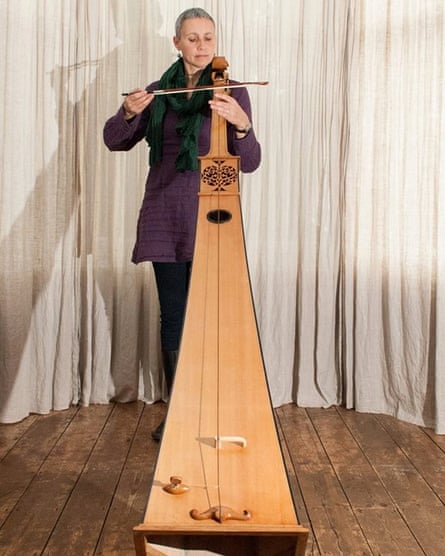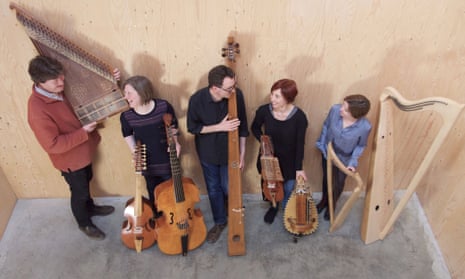On 24 October 1667, Samuel Pepys, arriving in Charing Cross too late for the theatre, went instead to visit some friends. There he saw “a Frenchman, Monsieur Prin, play on the Trump Marine”, an instrument which “doth so far out-do a Trumpet” and is “most remarkable; and at first was a mystery to me that I should hear a whole concert of chords together at the end of a pause”.
Almost extinct today, Pepys’s trump marine is more commonly known as the tromba marina. It is indeed a most remarkable instrument. It can be over 2m tall, and has one long, thick playing string which is bowed, and a host of sympathetic (resonating) strings. Melodies are produced by touching the harmonic nodes of the playing string with the thumb.
By the 17th century, the tromba marina had been around for at least 500 years and had grown from a simple monochord held horizontally to a tall, stately instrument with a buzzing foot-like bridge and sympathetic strings. Many surviving instruments were found in convents – it seems that tromba marinas were a staple of the northern European nun’s music box. Wind instruments would have been off-limits for women then, so it’s possible that tromba marinas were used as substitutes for trumpets.

As the 17th century wore on, the instrument began to appear in secular public music-making, culminating in performances by the late 17th-century virtuoso Jean-Baptiste Prin, son of Pepys’s Frenchman, who entertained English audiences with his huge collection of tromba marinas and producing a treatise on how to play the instrument. This was its heyday – by the end of the 18th century it had all but disappeared from view.
Like a trumpet, the tromba marina has a limited number of “good” harmonic notes. But, unlike a trumpet, the harmonics can’t be adjusted, which leads to a scale at odds with the various tuning temperaments of the day. Perhaps this is why it fell into obsolescence – the instrument simply didn’t fit with most other 18th-century instruments. In fact, maybe it only survived as long as it did because of its magical sonic and visual qualities.
- Clare Salaman plays the tromba marina at Spitalfields Music’s winter festival in London on 8 December as part of Sound House by the Society of Strange and Ancient Instruments. Sound House tours throughout 2017.

Comments (…)
Sign in or create your Guardian account to join the discussion